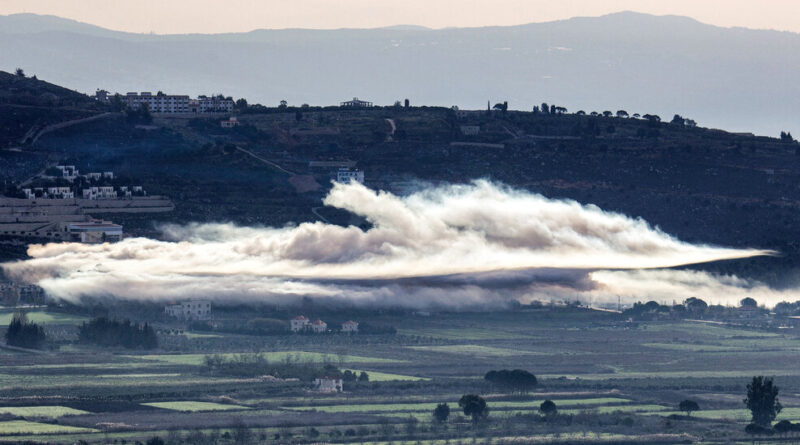Israel-Hamas War: Israel’s Military Says It Struck Hezbollah Positions in Lebanon
[ad_1]
Israel, which said over the weekend that it had successfully dismantled Hamas’s military structure in the north of the Gaza Strip, said it was taking a different tactical approach in the south, where a population that sought safety there fears how the war will play out over the coming months.
Rear Adm. Daniel Hagari said on Saturday that the military was working differently in central and southern Gaza, where most of the enclave’s population of about 2.2 million people is crowded, including about a million evacuees from the north, than it was in the north. But he did not elaborate on what, specifically, would change, saying the shift was based on lessons “learned from the fighting so far.”
In the northern half of the strip, where Israel began its ground invasion in late October, the military has “completed the dismantling of Hamas’s military framework,” Admiral Hagari said, though he added that the forces are still operating there against fighters who are continuing the battle even after their command structure has been destroyed.
He added that the fighting would continue throughout 2024.
Gabi Siboni, a colonel in the military reserves and a fellow of the conservative-leaning Jerusalem Institute for Strategy and Security, said that Hamas maintained infrastructure above and below ground in the north, “so it is still a fighting zone.” Despite the Israeli military’s achievements, Hamas is “a difficult and determined enemy” that has armed itself and “built underground fortresses” over years, he said.
“It will take time to dismantle it completely,” Mr. Siboni said, adding that the fighting in the south is all the more complicated by the density of the civilian population there, and that it might have to continue into 2025.
The Israeli military’s suggestion that fighting in Gaza would continue throughout the upcoming year further terrified Gazans who have already endured grievous losses in the first three months of the war — family, friends, neighbors, homes, jobs, schools and even, in a growing number of cases, the ability to feed themselves.
“We face great danger, as unarmed civilians who have nothing to do with the resistance or carrying weapons,” said Youssef, 32, a resident originally from Gaza City who has been displaced twice as he has attempted to flee the fighting.
While the Israeli military successfully ordered many Gazans in the north to evacuate further south in the earlier stages of the war — it is not known exactly how many — there is nowhere for people in central and southern Gaza to go, except to crowd further into the severely overstretched city of Rafah, at Gaza’s southern border with Egypt.
More than a million people are already squeezed into Rafah’s confines, according to the United Nations. And people cannot move back north: Besides ongoing episodes of fighting in northern Gaza, that part of the territory is largely in ruins.
The United Nations estimated at the end of December that about 65,000 housing units across Gaza had been destroyed, and that nearly 300,000 more had been damaged, meaning more than half a million people will have no home to return to.
For those whose homes were still habitable, it said, many more would be unable to live in them right away because Gaza’s infrastructure was so degraded, and explosives left over from combat would make the return too risky.
In the meantime, Gaza’s displaced grapple with increasingly desperate shortages of food, water and warm clothing and shelter for the winter weather. About half of Gazans are at risk of starving, according to aid groups.
“There are children, and there’s no food or clothing, especially since it’s the winter,” said Youssef. “If we talk about suffering, I’ll need a lot of time to explain it.”
He added: “We have the right to return to our homes and see our children, and to have food, water, and drink, and to be safe.”
[ad_2]
Source link



